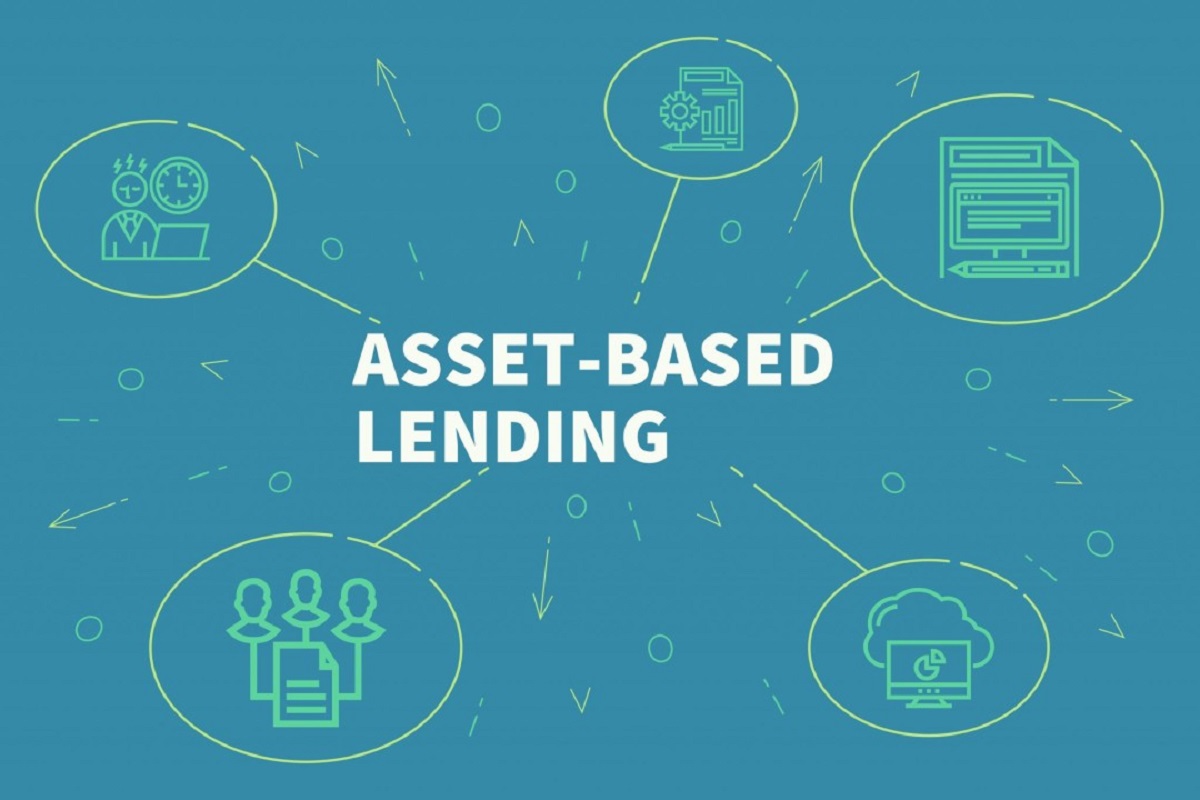Introduction
Asset based lending is a financial solution that provides businesses with access to funding by leveraging their assets as collateral. Unlike traditional bank loans that are based on the borrower’s creditworthiness, asset based lending focuses on the value of the company’s assets, such as accounts receivable, inventory, and machinery, to determine the loan amount. This type of financing can be particularly beneficial for businesses facing cash flow challenges or those looking to fund growth opportunities.
Asset based lending offers a flexible and versatile financing option for companies across various industries. It allows businesses to unlock the value of their existing assets to secure the necessary capital for their operations. Unlike other forms of external financing, asset based lending provides borrowers with quick access to funds, making it an ideal choice for businesses that require immediate capital injection.
Whether it’s a manufacturing company needing funds to purchase new equipment, a retail business looking to expand its product offerings, or a service-based company seeking working capital, asset based lending can be a valuable financing solution.
In this article, we will delve deeper into the concept of asset based lending, explaining how it works, its advantages and disadvantages, the types of collateral that can be used, the eligibility criteria to qualify for this type of financing, how to apply for asset based lending, and tips for choosing the right asset based lender for your business.
What is Asset Based Lending?
Asset based lending, also known as asset-backed lending or ABL, is a type of financing that allows businesses to secure a loan by pledging their assets as collateral. Unlike traditional lending methods that prioritize the borrower’s creditworthiness, asset based lending focuses on the value of the assets being used as collateral.
Assets commonly used in asset based lending include accounts receivable, inventory, equipment, real estate, and even intellectual property. By pledging these assets, businesses can obtain a line of credit or a loan from a lender. The loan amount is determined by the value of the assets being used as collateral, typically a percentage of their appraised value.
Asset based lending provides businesses with a flexible and revolving source of financing. As the value of the assets fluctuates, the borrowing capacity may increase or decrease accordingly. This allows businesses to access the working capital they need, especially during periods of growth or when faced with cash flow challenges.
One key aspect of asset based lending is the concept of the borrowing base. The borrowing base is the maximum amount of funds that a borrower can access based on the value of their pledged assets. The borrowing base formula takes into account factors such as the appraised value, liquidation value, and collections history of the assets being used as collateral.
Asset based lending is particularly advantageous for businesses with valuable assets but limited access to traditional financing options, such as start-ups, companies with fluctuating revenues, or those with less-than-optimal credit histories. The ability to secure a loan based on the value of their assets provides these businesses with a lifeline to maintain or expand their operations.
Overall, asset based lending offers businesses a flexible and adaptable financing solution. By leveraging their assets, businesses can access the capital they need to meet their short-term and long-term financial objectives.
How does Asset Based Lending work?
Asset based lending works by using the borrower’s assets as collateral to secure a loan or a line of credit. The process typically involves several steps:
- Asset Evaluation: The lender assesses the value of the borrower’s assets that will be used as collateral. This valuation is typically conducted by a professional appraiser who determines the fair market value of the assets.
- Borrowing Base Determination: Based on the valuation of the assets, the lender establishes the borrowing base, which is the maximum amount of funds that the borrower can access. The borrowing base is typically a percentage of the appraised value, ensuring that there is a buffer in case of any fluctuations in asset values.
- Loan Agreement: Once the borrowing base has been established, the lender and the borrower enter into a loan agreement. This agreement outlines the terms and conditions of the loan, including the interest rate, repayment schedule, and any other applicable fees or penalties.
- Collateral Monitoring: Throughout the duration of the loan, the lender closely monitors the value and condition of the assets used as collateral. Regular updates and reporting are provided by the borrower to ensure the lender’s confidence in the collateral’s value.
- Funds Disbursement: When the borrower needs access to funds, they can request a draw from the lender based on their borrowing base. The funds are typically provided within a short timeframe, allowing the borrower to meet their immediate cash flow needs.
- Repayment: As with any loan, the borrower is responsible for repaying the principal amount, along with any accrued interest, based on the agreed-upon repayment schedule. The repayment terms may vary depending on the specific loan agreement.
It is important to note that asset based lending is typically a revolving form of financing. This means that as the borrower repays the loan, they regain access to the funds within their borrowing base. This flexibility allows businesses to utilize their assets repeatedly to meet their ongoing funding requirements.
Overall, asset based lending provides businesses with a viable financing solution by leveraging their assets as collateral. This type of lending not only assists in addressing immediate cash flow needs but also provides the flexibility and scalability required to support the growth and operations of the business.
Advantages of Asset Based Lending
Asset based lending offers businesses several key advantages that make it an attractive financing option. Here are some of the main benefits:
- Accessibility: Asset based lending provides access to funds for businesses that may have limited options for traditional financing. It allows companies with valuable assets, such as accounts receivable, inventory, or equipment, to leverage those assets as collateral and secure the necessary capital.
- Flexible Financing: Unlike traditional loans that have rigid repayment schedules, asset based lending offers greater flexibility. Borrowers can access funds as needed within their borrowing base, providing them with a revolving source of capital to address cash flow fluctuations or fund growth opportunities.
- Fast Approval and Funding: Asset based lending offers a quicker approval and funding process compared to traditional financing methods. By primarily focusing on the value of assets rather than creditworthiness, lenders can assess and approve loans more efficiently, enabling businesses to receive funds in a shorter timeframe.
- Higher Loan Amounts: With asset based lending, businesses can potentially access larger loan amounts compared to traditional financing options. The loan amount is typically based on a percentage of the appraised value of the assets being used as collateral, allowing for more substantial funding opportunities.
- Improved Cash Flow: Asset based lending can help businesses improve their cash flow by freeing up working capital tied up in assets. By converting accounts receivable or inventory into immediate cash, companies can meet their operational expenses, invest in growth initiatives, or seize new business opportunities.
- Enhanced Growth Opportunities: Asset based lending can provide businesses with the capital needed to fuel their growth initiatives. Whether it is expanding product lines, entering new markets, or acquiring additional equipment, asset based lending enables businesses to access the necessary funds to pursue strategic growth plans.
These advantages make asset based lending an attractive financing option for businesses across various industries and stages of growth. By leveraging their assets, businesses can unlock the capital they need to address immediate financial needs, support continuous operations, and achieve their long-term objectives.
Disadvantages of Asset Based Lending
While asset based lending offers numerous benefits, there are also some potential disadvantages that businesses should consider before pursuing this financing option. Here are a few of the main drawbacks:
- Higher Interest Rates: Asset based lending often comes with higher interest rates compared to traditional bank loans. This is because lenders take on higher risk by focusing on asset value rather than creditworthiness. It’s important to carefully assess the interest rates and fees associated with asset based lending to ensure it aligns with the company’s financial goals.
- Asset Valuation Costs: Businesses utilizing asset based lending will incur costs associated with asset valuation. Professional appraisers are typically employed to assess the value of the assets being used as collateral. These appraisal fees can add to the overall cost of obtaining and maintaining asset based loans.
- Asset Liquidation Risk: In the event of default, the lender may choose to liquidate the assets used as collateral to recover the outstanding loan amount. This carries the risk of potential loss or complications in the liquidation process, depending on the market value and demand for the assets.
- Restrictions on Asset Use: Asset based lending may come with certain restrictions on the use of the assets being used as collateral. Borrowers may need to obtain the lender’s approval or adhere to specific guidelines when making changes or disposing of the collateral. This can limit the flexibility and freedom businesses have in managing their assets.
- Dependency on Asset Value: The amount of funding a business can access through asset based lending is directly tied to the value of its assets. Fluctuations in asset value can impact the borrowing base, potentially reducing the available funds. This can pose challenges for businesses with assets that may have volatile or uncertain values.
- Potential Impact on Existing Financing Relationships: Before pursuing asset based lending, businesses need to consider how it may affect their existing financing relationships. Some lenders may have restrictions or covenants in place that prohibit or limit the use of assets as collateral for other loans. It is important to review existing loan agreements to ensure compliance and avoid any conflicts.
Despite these potential disadvantages, asset based lending remains a valuable financing option for businesses in need of capital. It’s essential for businesses to carefully evaluate their specific circumstances, financial goals, and the terms of the lending arrangement to determine if asset based lending is the right choice for them.
Types of Collateral in Asset Based Lending
Asset based lending allows businesses to leverage various types of assets as collateral to secure financing. The specific assets accepted as collateral may vary depending on the lender and the nature of the business. Here are some common types of collateral used in asset based lending:
- Accounts Receivable: One of the most common forms of collateral in asset based lending is accounts receivable. Businesses pledge their outstanding invoices from customers as collateral. The lender evaluates the creditworthiness of the customers and the likelihood of payment to determine the value of the accounts receivable pledged.
- Inventory: Inventory can also be used as collateral in asset based lending. This includes raw materials, work-in-progress, and finished goods. The lender assesses the market value, saleability, and condition of the inventory to determine its value as collateral. Businesses in industries such as retail, manufacturing, and distribution often utilize this type of collateral.
- Equipment and Machinery: Tangible assets, such as machinery, equipment, and vehicles, can be pledged as collateral in asset based lending. The value of these assets is evaluated based on factors such as condition, market demand, and depreciation. Borrowers in sectors like construction, manufacturing, transportation, and agriculture commonly leverage equipment and machinery as collateral.
- Real Estate: Businesses that own commercial properties can use real estate as collateral in asset based lending. This includes office buildings, warehouses, retail spaces, or land. Lenders usually conduct a property appraisal and consider factors like location, market value, and potential rental income when evaluating the real estate as collateral.
- Intellectual Property: Some asset based lenders may accept intellectual property assets as collateral. This can include patents, trademarks, copyrights, and trade secrets. These intangible assets are valued based on their market potential, uniqueness, and protection status. Businesses in industries driven by intellectual property, such as technology, pharmaceuticals, and media, may utilize this type of collateral.
- Other Assets: Depending on the lender and the specific circumstances, other assets such as contracts, royalties, investments, or cash and securities may be considered as collateral in asset based lending. The value and acceptance of these assets as collateral may vary on a case-by-case basis.
It is important for businesses to work closely with the lender to determine which assets are eligible for collateral and to ensure a thorough valuation process. Each type of collateral has its unique considerations, and businesses should evaluate the risks and benefits associated with pledging specific assets to secure financing.
Eligibility Criteria for Asset Based Lending
Asset based lending is available for businesses across various industries, but lenders typically have certain eligibility criteria that borrowers must meet. While specific requirements may vary among lenders, here are some common factors that determine eligibility for asset based lending:
- Asset Type and Value: The type and value of assets that a business can use as collateral are essential factors in determining eligibility. Lenders typically prefer assets that are easy to value, have a market demand, and can be readily liquidated if necessary. Businesses with valuable accounts receivable, inventory, equipment, or real estate are more likely to meet the eligibility criteria.
- Financial Stability: Lenders evaluate the financial stability and creditworthiness of the borrowing company. This includes assessing the company’s financial statements, cash flow, profitability, and credit history. Demonstrating strong financial health increases the chances of being eligible for asset based lending.
- Track Record and Experience: Lenders may consider the track record and industry experience of the borrower when determining eligibility. The borrower’s ability to effectively manage their assets, generate consistent sales, and navigate the challenges of their industry can contribute to favorable eligibility considerations.
- Business Plan: Lenders often require a comprehensive business plan from the borrower. The plan should outline the current financial situation, growth opportunities, and how the funds obtained through asset based lending will be utilized. A well-prepared and strategic business plan can enhance the chances of meeting the eligibility requirements.
- Legal and Regulatory Compliance: Meeting legal and regulatory requirements is crucial in asset based lending. Businesses must ensure compliance with applicable laws, including licensing, permits, and environmental regulations. Lenders may conduct due diligence to verify compliance to mitigate potential risks.
- Customer Base and Contracts: Depending on the types of assets used as collateral, the borrower’s customer base and contracts may also be considered. Lenders may evaluate the creditworthiness and payment history of the borrower’s customers to assess the risk associated with accounts receivable. Having long-term contracts or reputable customers can increase eligibility chances.
It’s important to note that each lender may have their own specific criteria and requirements. Prospective borrowers should carefully review the eligibility criteria of different lenders and communicate openly to ensure a clear understanding of the requirements.
By meeting the necessary eligibility criteria, businesses can position themselves to access asset based lending and benefit from the flexible financing solutions it offers.
How to Apply for Asset Based Lending
Applying for asset based lending involves several steps to ensure a smooth and successful process. Here’s a general overview of how to apply for asset based lending:
- Evaluate Your Financing Needs: Assess your business’s financial situation and determine why you need the capital. Identify the specific assets you plan to leverage as collateral and estimate the amount of funding required.
- Research Lenders: Conduct thorough research to find reputable lenders that specialize in asset based lending. Look for lenders with experience in your industry and favorable terms and conditions.
- Contact Lenders: Reach out to selected lenders to discuss your financing needs and inquire about their asset based lending options. Provide them with preliminary information about your business, assets, and financials to gauge their interest and eligibility requirements.
- Gather Documentation: Prepare the necessary documentation for the loan application. This may include financial statements, tax returns, accounts receivable reports, inventory reports, and business licenses. The specific documents required may vary among lenders.
- Submit Application: Complete the loan application provided by the lender. Provide accurate and detailed information about your business, assets, and financials. Include any supporting documentation requested by the lender.
- Underwriting and Due Diligence: The lender will conduct underwriting and due diligence to evaluate your application. This may involve verifying the value of assets, assessing financial statements, and reviewing your business plan. Be prepared to provide any additional information or clarifications as requested by the lender.
- Negotiate Terms: If your application is approved, the lender will present you with a loan proposal. Review the terms and conditions carefully, including interest rates, fees, repayment schedule, and any restrictions on the use of assets. Negotiate and clarify any terms that may require adjustment.
- Loan Closing: Once you have agreed upon the terms, finalize the loan agreement by signing the necessary documents. Be sure to understand and comply with all obligations outlined in the agreement.
- Ongoing Relationship: Maintain good communication and transparency with the lender throughout the loan term. Keep the lender updated on any changes in your business or assets. Provide regular reports as requested and adhere to the agreed-upon repayment schedule.
Remember, each lender may have specific requirements and processes, so it is essential to follow their instructions and guidance throughout the application process. Being well-prepared and organized will help streamline the application and increase your chances of securing asset based lending for your business.
Choosing the Right Asset Based Lender
Choosing the right asset based lender is a critical decision that can greatly impact your business’s financing and overall success. Here are some key factors to consider when selecting an asset based lender:
- Experience and Expertise: Look for lenders with experience and expertise in asset based lending. Consider their track record and reputation in the industry. A lender who understands your business’s unique needs and challenges can provide valuable insights and guidance throughout the financing process.
- Industry Focus: Different lenders may specialize in specific industries. Choosing a lender familiar with your industry can be beneficial. They will have a better understanding of your business’s assets, market trends, and risk factors, allowing for smoother communication and a more tailored financing solution.
- Flexibility: Assess the flexibility and adaptability of the lender. Asset based lending requires ongoing monitoring of your assets and potential adjustments to borrowing base calculations. Choose a lender who can accommodate changes in your business and provide the necessary flexibility to meet your evolving financing needs.
- Terms and Conditions: Carefully review the terms and conditions offered by each lender. Compare interest rates, fees, repayment schedules, and any additional requirements or restrictions. Consider the impact these factors will have on your business’s cash flow and overall financial health.
- Transparency and Communication: A strong lender-borrower relationship is built on transparency and open communication. Choose a lender who is responsive, accessible, and willing to provide regular updates on the status of your loan. Effective communication will help you address any concerns or issues that may arise during the lending process.
- Additional Services: Some asset based lenders may offer additional services beyond financing. These services could include credit and collection management, inventory control, or supply chain solutions. Assess whether these supplementary services align with your business’s needs and can add value to your operations.
- References and Reviews: Seek references or read reviews from other businesses that have worked with the lender. Their experiences can provide valuable insights into the lender’s professionalism, reliability, and overall satisfaction level.
- Long-Term Relationship: Consider the potential for a long-term relationship with the lender. Asset based lending often involves ongoing financing needs, and maintaining a strong partnership can benefit your business in the future. Assess the lender’s willingness to support your evolving needs and growth plans as your business progresses.
Take the time to thoroughly evaluate and compare different asset based lenders to ensure you choose the one that best aligns with your business’s goals and requirements. Remember, selecting the right lender is crucial for successful asset based lending and can make a significant difference in your business’s financial stability and growth.
Conclusion
Asset based lending provides businesses with a flexible and versatile financing solution by leveraging their assets as collateral. This alternative form of financing allows companies to access funds based on the value of their assets, such as accounts receivable, inventory, equipment, real estate, and intellectual property. By unlocking the value of these assets, businesses can secure the capital they need to address cash flow challenges, fund growth initiatives, and support their ongoing operations.
While asset based lending offers numerous advantages, including accessibility, flexible financing, and fast approval, there are also potential disadvantages to consider. Higher interest rates, asset valuation costs, and the risk of asset liquidation are among the drawbacks associated with this form of financing. However, businesses can mitigate these risks by carefully evaluating their specific circumstances, thoroughly researching lenders, and negotiating favorable terms and conditions.
When applying for asset based lending, it is important to gather the necessary documentation, carefully review and negotiate the terms, and maintain open communication with the lender throughout the process. By adhering to eligibility criteria and selecting the right asset based lender, businesses can navigate the application process more effectively and obtain the desired financing for their needs.
In conclusion, asset based lending offers businesses a valuable financing option that can provide the necessary capital to support growth, improve cash flow, and seize opportunities. By leveraging their assets, businesses can unlock the funding they require to achieve their financial objectives and propel their success in today’s competitive business landscape.

























